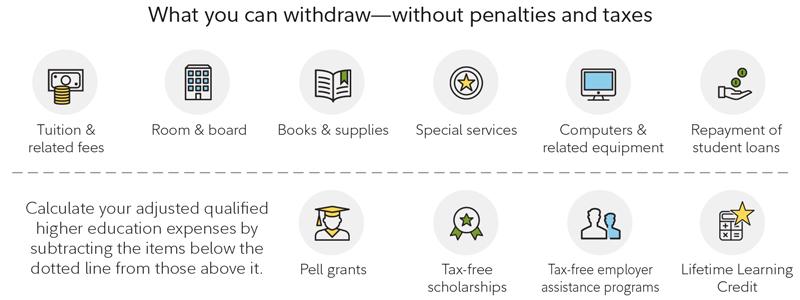In today’s ever-evolving financial landscape, families are constantly seeking innovative strategies to ensure their children’s educational aspirations are met without incurring overwhelming debt. One such strategy gaining traction is the utilization of life insurance as a tool to fund college education. While traditionally viewed as a means of providing financial security in the event of an untimely death, life insurance policies offer a range of benefits that can be strategically leveraged to support higher education expenses. This article explores the various ways life insurance can be utilized to fund college education, examining the different policy types, potential advantages, and considerations families should weigh when incorporating life insurance into their educational financial planning. Whether you’re a parent planning for your child’s future or an individual seeking to optimize your financial resources, understanding how life insurance can serve as a versatile asset in education funding is crucial.
Understanding Life Insurance as a Financial Tool for Education
Life insurance is not just a safety net for unexpected events; it can also be a strategic financial tool to support higher education expenses. One popular approach is through a permanent life insurance policy, such as whole life or universal life insurance, which includes a cash value component. Over time, this cash value grows tax-deferred, offering a potential resource for college funding. Here’s how it works:
- Cash Value Accumulation: As premiums are paid, a portion is allocated to build cash value, which can be accessed through policy loans or withdrawals.
- Flexibility and Control: Unlike traditional student loans, you have the flexibility to decide when and how much to withdraw, without affecting your eligibility for financial aid.
- Tax Advantages: Withdrawals or loans against the policy’s cash value are generally tax-free, provided the policy is not surrendered.
- Continued Coverage: Even as you leverage the cash value for education, the policy remains in force, ensuring continued life insurance protection.
However, it is crucial to understand the implications, such as potential reduction in the death benefit and the impact on policy performance. Consulting with a financial advisor can provide personalized guidance to effectively utilize life insurance as a means to fund education.

Evaluating the Types of Life Insurance Suitable for College Funding
When considering life insurance as a tool for college funding, it’s essential to understand the various types available and their unique benefits. Whole life insurance offers both a death benefit and a cash value component, which grows over time. This cash value can be accessed through policy loans or withdrawals, potentially providing a source of funds for college expenses. Universal life insurance is another option, offering flexible premiums and an adjustable death benefit. Like whole life, it accumulates cash value that can be used to help pay for education costs.
Another type to consider is variable life insurance, which allows policyholders to invest the cash value in a range of separate accounts. This investment flexibility could lead to higher returns, although it comes with increased risk. It’s important to weigh these options carefully and consider factors such as risk tolerance and long-term financial goals. Term life insurance, on the other hand, does not build cash value but can be an affordable way to ensure that funds are available for college in the event of the policyholder’s untimely death. Key considerations when evaluating these options include:
- Cash value growth potential
- Premium flexibility
- Investment risk tolerance
- Duration of coverage needed

Strategies for Using Cash Value in Permanent Life Insurance Policies
Leveraging the cash value in permanent life insurance policies can be an innovative way to fund a college education. By tapping into the cash value, policyholders can potentially avoid the burden of student loans. Here are some strategies to consider:
- Policy Loans: Borrowing against the cash value allows for flexible repayment terms and typically lower interest rates than traditional student loans. Keep in mind that unpaid loans may reduce the death benefit.
- Partial Withdrawals: Withdrawing a portion of the cash value can provide immediate funds for tuition and other expenses. It’s important to ensure that withdrawals do not exceed the amount that keeps the policy in force.
- Funding a 529 Plan: Use the cash value to contribute to a 529 savings plan, offering tax advantages for educational expenses. This strategy can combine the benefits of a life insurance policy with the tax efficiencies of a 529 plan.
When considering these strategies, it’s crucial to evaluate the impact on the policy’s long-term value and the potential implications for the policyholder’s overall financial plan. Consulting with a financial advisor can help tailor the approach to individual needs and goals.

Weighing the Pros and Cons of Life Insurance for Education Expenses
When considering life insurance as a vehicle for funding college education, it’s essential to examine both its advantages and drawbacks. On the positive side, using a permanent life insurance policy can offer cash value accumulation. Over time, this cash value can be accessed via loans or withdrawals to cover education costs, often providing a more flexible and less stringent financial aid option compared to traditional student loans. Additionally, the growth of cash value is typically tax-deferred, which can be a strategic advantage in managing educational expenses.
- Pros:
- Potential for cash value growth
- Tax-deferred accumulation
- Flexibility in fund usage
- Cons:
- Higher premiums compared to term life insurance
- Possible reduction in death benefit if cash value is used
- Complexity in policy management
On the downside, these policies often come with higher premiums compared to term life insurance, which may not be feasible for all families. Additionally, borrowing against the cash value can reduce the death benefit, impacting the primary purpose of life insurance. Furthermore, managing these policies can be complex, requiring careful consideration and financial planning. Thus, weighing these factors is crucial to determine if this strategy aligns with your financial goals and educational funding needs.
In Conclusion
utilizing life insurance as a means to fund college education offers a unique and flexible financial strategy. By understanding the various types of life insurance policies, such as whole life or universal life, and their potential for cash value accumulation, individuals can make informed decisions to support educational expenses. It is crucial to carefully evaluate personal financial situations, future goals, and consult with financial advisors to tailor a plan that aligns with specific needs. While life insurance can provide a supplementary funding source, it should be integrated thoughtfully with other savings and investment strategies. By doing so, families can effectively manage the financial demands of higher education, ensuring a brighter academic future for their loved ones.

